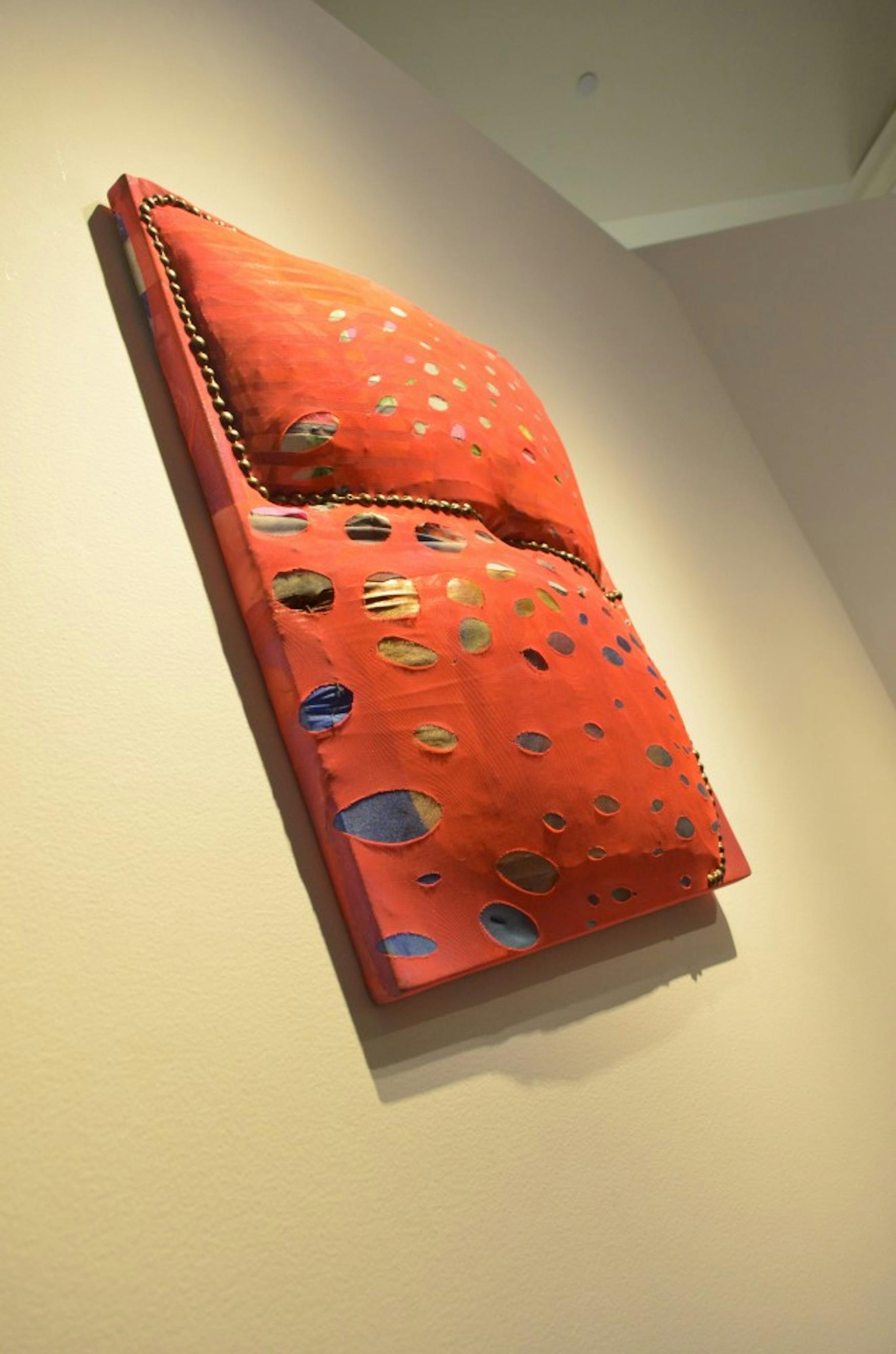‘Big Bounce’ stretches art’s boundaries
Have you ever looked at a building and thought: this would look better covered in spandex? Have you ever wondered if a painting can still be called a painting if it is created entirely out of fabric? Have you ever tried to turn your old tights into a work of art?
Artist Leeza Meksin likely asked herself these questions at some point, and now we can all benefit from the answers she has discovered. Meksin's spandex and fabric-based site-specific exhibit, Big Bounce, opened at the Women’s Studies Research Center with a reception on Friday. Every piece in the exhibit featuring a different pattern, texture and color of spandex—and there are a variety of ways that spandex is used throughout the exhibit.
A crowd turned up at the reception to see the exhibit and hear the artist talk about her work. Meskin is a Brooklyn-based artist who uses a variety of materials in unconventional ways that redefine our ideas of conventional art. Meksin said that her favorite material is spandex, a material that unifies all of her work to date. Her past installations have combined spandex, with materials such as sand, weights, plastic and cloth. On her website, Meksin writes that her “use of spandex explores the behaviour and potential of a fabric that revolutionized … our experience of clothing while shifting civilization towards a more plastic reality.”
Meksin explained that she chose to work with spandex because it is more than a fabric for clothing—it can be expressive, its elasticity has interesting implications in modern art, and it is easy to mould and twist into new shapes. Spandex comes in an almost infinite variety of colors, sizes and patterns, making it especially apt to use in art, which comes in a similarly infinite forms. The material interacts with conventional materials such as paint and polymersand less conventional materials like sand and ropes to give depth to Meksin’s works. Meksin writes on her website that her use of the material “seeks to explore the intersection of painting, sculpture, architecture, design and fashion.”
The exhibit at the WSRC features three-dimensional canvases and structures. Although there were a few typically sized canvases hanging from the gallery walls, many pieces left the canvases behind and stretched across entire walls instead. Mixed-media sculptures were propped up against walls and hung from the ceiling, requiring thick ropes to lower them to eye level.
One sculpture, titled “Landing Gear, Deinstalled,” (2014) used fishnet, ratchet straps, yarn, neoprene and zip ties to cover a long rectangular piece of wood with a steel frame. The sandy-brown, fraying fishnet hung over the wooden panel like a curtain, with various stripes of colored neoprene threaded throughout the material. Interestingly, this piece could be classified as a sculpture based on its use of freestanding materials, but its placement against a wall suggested that Meksin was using the piece to further challenge the public’s idea of what defines a painting.
This method, where works are not strictly defined as either sculptures or paintings, allowed Meksin to make the observers question art’s relation to space and architecture in ways they might not have considered before. The most extreme example of this was the installation that covered the side of 32-foot tall WSRC in multi-colored, overlapping layers of spandex. The installation is so large and bright that it can be seen from South Street and the Brandeis train station.
One eye-catching piece, titled “Big Cheese,” (2014) used oil, acrylic polymer, zip ties, latex tubing and spandex over a 24 by 18 inch wood and Masonite panel. The work featured a yellow sheet of spandex covered with a pattern of (cheese-like) holes over layers of similarly patterned pink spandex and plastic. The piece is abstract in nature, and Meksin described it in her talk as a painting, although no paint was used in its creation.
The exhibit enhances the center not only aesthetically but also thematically. WSRC docent Phyllis Shapiro ’56 commented that Meksin’s use of spandex has a strong connection to feminism. Shapiro said that we associate spandex with clothing and housework, domestic activities that we often (incorrectly) assume correlate to meekness. She said that Meksin’s unconventional style, use of bright neon colors and unconventional sense of structure defy the idea that domestic materials, and by extension, activities, must always correlate with fragility or timidity.
In a larger sense, the exhibit also allows Meksin to take something commonplace—a common material and the common practice of housework—and find the beauty in it, reclaiming the everyday as art and showing that there is beauty even in doing the simple tasks needed to keep a house running smoothly.
The exhibition will be on view through Dec. 16.



Please note All comments are eligible for publication in The Justice.